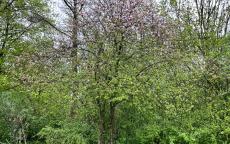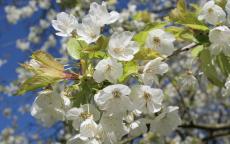Native trees
Native trees are species that colonised the British Isles after the last ice age.
Asplenifolia
The Cut-leaf Rowan, an excellent form of the native Mountain Ash, orange-red berries, and highly feathered leaves.£44.50 - £72.95buySorbus aucupariaCarpinus betulus
The Common Hornbeam makes an excellent small tree, with attractive autumn leaf colours. It is also suitable for training and pleaching.£72.95buy- Awards: RHS AGM (current)
Carpinus betulusCastanea sativa
The Spanish Chestnut is a large fast-growing tree, best known for its edible nuts.Castanea sativaCommon Beech
The Common Beech is a large attractive deciduous tree with good autumn leaf colours.£73.00buy- Awards: RHS AGM (current)
Fagus sylvaticaCommon Rowan
The Rowan or Mountain Ash, native to most parts of the UK. The leaves turn golden red in autumn, accompanied by clusters of red berries. One of the largest species of Sorbus.£45.00 - £71.00buyBest sellerSorbus aucupariaCrataegus monogyna
A hardy native hawthorn species, with white blossom and red haws, and particularly attractive to bees.Crataegus monogynaField Maple
The Field Maple makes a good specimen tree with attractive autumn colours, and is easy to grow.- Awards: RHS AGM (current)
Acer campestreMalus sylvestris
Malus sylvestris is the native wild crab apple, easy to grow and ideal for native planting schemes.Malus sylvestrisPrunus avium
The native "Gean" or "Mazzard" cherry, makes an attractive woodland tree.£73.00buy- Awards: RHS AGM (former)
Prunus aviumSilver Birch
The Common Silver Birch, native to Europe, popular for its peeling white bark and pendulous branches.£70.00buyBest sellerBetula alba pendula
How to choose Native trees
The term "native" tree has a fairly precise meaning when applied to the British Isles. It is a species that colonised the British Isles in the period 10,000 years ago to 6,000 years ago - in other words the period after the last ice age ended and the climate started to warm, but before rising sea levels formed the North Sea, Irish Sea, and English Channel and finally cut off the UK from further natural colonisation.
While this colonisation process was mostly achieved by natural dissemination of seeds, the first humans settlers arrived at this time, bringing with them plants and trees that they found useful - so even from the start human activity has influenced our native trees.
The Woodland Trust list of British native trees is considered the best reference point for native trees.
Some of these native species have been subsequently shaped by human activity, giving rise to new cultivars and sub-species. This is particularly the case with Prunus and Malus, both native to the UK, but where, since prehistoric times, man has selected and cultivated and propagated cultivars, favouring those with larger and more palatable fruits. In addition, over the last 500 years new cultivars of various native ornamental species have been introduced for their aesthetic qualities, while new species have been deliberately imported. These are perhaps best considered as "naturalised" rather than "native" varieties.
We take a relaxed view that modern cultivars which do not stray too far from the parent native species in appearance can be considered native. On this basis a James Grieve apple tree is not native, but a Sorbus 'Asplenifolia' (essentially a more colourful form of the native Rowan Sorbus aucuparia) arguably is.



